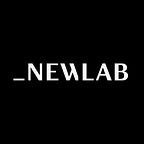Acquired Taste: A Different Kind of Brooklyn Food Movement
The microwave. Sweet’N Low. TV dinners. Shelf-lives. Food science and tech are behind some of the last century’s biggest game-changers. But as we find ourselves immersed in a generation (and borough) that craves a return to the basics, it’s worth putting down the artificial flavoring and asking something new of technology as it relates to food.
Photography by Rich Gilligan / Reporting by New Lab
For example, can it help democratize local produce? Can it sustain clean waterways? Can it redefine the meaning of community?
The US is fighting all kinds of gaps — wage, mobility, and education to name a few — and a walk through Brooklyn puts the food gap on immediate display. One neighborhood will be overflowing with organic options and a dozen blocks later it’s all pre-packaged junk with a few zombie bananas at the bodega counter.
Farmshelf, a New Lab member, is making an effort to change that. “We build lego blocks to grow food anywhere,” says founder and CEO Andrew Shearer, referring to his company’s modular vertical farms that allow people to harvest produce where they live and work.
The bookshelf-sized automated hydroponic growing environments currently support grains, leafy greens, and herbs. They can be seen throughout the city, most publicly in Grand Central station, where a wall of Farmshef units supply the Great Northern Food Hall with fresh produce.
Shearer says his company plans to expand its offerings to include peppers, strawberries and tomatoes — and eventually cucumbers and brussel sprouts. Farmshelf customers — indoor gardeners, restaurateurs, and cafeteria managers alike — can monitor soil pH and nutrient levels from their phones. The company’s app will flag when it’s time for harvest.
“We want kids to assume food is grown where it’s consumed, not arriving on some truck,” Shearer says.
Unless of course, we’re within city limits and staring down an oyster — then we’re hoping it hails from somewhere other than the Hudson. But that wasn’t always the case. There was a time (pre-1900) that oyster stands were as prevalent on this city’s street corners as hot dog vendors.
New York City’s bivalves were over-harvested, and its rivers too polluted, by the time the Grand Central Oyster Bar opened, in 1914. Grant Goldner, a Science Sandbox at New Lab fellow and New York native, has launched a project to both illustrate the mollusks’ importance to the environment and demonstrate how we can re-incorporate them as a local food source.
Goldner’s project, called Harbor Food, is a plan to experimentally grow edible oysters in the Hudson River as part of a greater effort to personalize marine pollution. His model leverages the powerful filtration abilities of bivalves to grow the first edible New York oysters to be found in the Hudson River in over a century. Goldner’s demonstration consists of two tanks of oysters — the first tank fills with dirty water from the Hudson, and, over the course of a tidal cycle, the oysters filter the water into a second tank, where the edible layer of oysters grows.
Goldner plans for the project to be located in a highly trafficked — or kayaked — area of the Hudson. “We want this piece to shock people into understanding what it takes to grow edible oysters,” he says. “The ultimate goal is to inspire activism.”
Sometimes inspiring change requires an indirect approach. Creative technologist Emilie Baltz uses food, drink and technology to create unconventional experiences that shift people’s perception of sustenance.
“”The real need’s in transforming human behavior,” Baltz says. “My goal is to reveal how the act of eating can feed our creativity, ignite wonder and deliver pleasure.”
Baltz’s work takes on many forms — from multi-sensory experiences like Lickestra, an orchestra with sound that stems from an unlikely place: ice cream cones with sensors inside (the video is certainly worth a watch), to creative dinner experiences like Circuit of the Senses, a 5-course interactive dinner that encouraged participants to touch, taste, smell, see and listen together as a community.
“If we see eating as a foundation for all human consumption, then we start to understand its power in affecting great behavioral change,” Baltz says. “A good dose of imagination is how to get people excited.”
Shearer, the CEO of Farmshelf, says that his company uses technology to enable and simplify an experience that people are searching for: that of growing your own food, or seeing where it is grown. “Our hope is to bring the joy of that experience into everyday life, whether you live in New York or Bangkok or Antarctica,” he says.
When it comes to excitement, there’s plenty to talk about.
